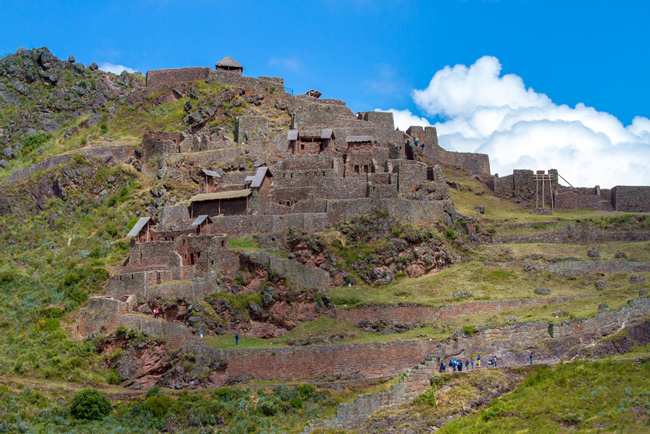
Pisac Ruins
Písac’s sprawling Inca ruins, known as Inca Písac, are perched on a plateau above the town, with a plunging gorge on either side. Consisting of a temple, baths, an altar, a ceremonial platform, and agricultural terracing, this well-maintained site once served as a religious, agricultural and military center.
More about Pisac Ruins
Researchers believe that Písac was established to defend the southern entrance of the Sacred Valley, controlling a route that connected the Inca Empire to the rainforest. The path leading into the rainforest still remains.
Perhaps the most impressive feature of the entire site is the agricultural terracing, which sweeps around the south and east sides of the mountain in huge, graceful curves. At the top of the terracing is an Inca ceremonial altar with an intihuatana, a ritual stone and astronomical tool that’s name means ‘hitching post of the sun.’
Walking up to the ruins, visitors can admire the mud houses scattered along the path. This path will lead up the hillside past a series of ceremonial baths and then to the military area. Looking across the gorge from the back of the ruins, hundreds of holes can be seen dotting the cliff wall. These are Inca tombs that were raided by grave robbers, and unfortunately are now completely off-limits to tourists.
It's more than just having a good time or visiting beautiful places (although that's absolutely a part of it!), it's about being part of a unique experience that stays with you.



